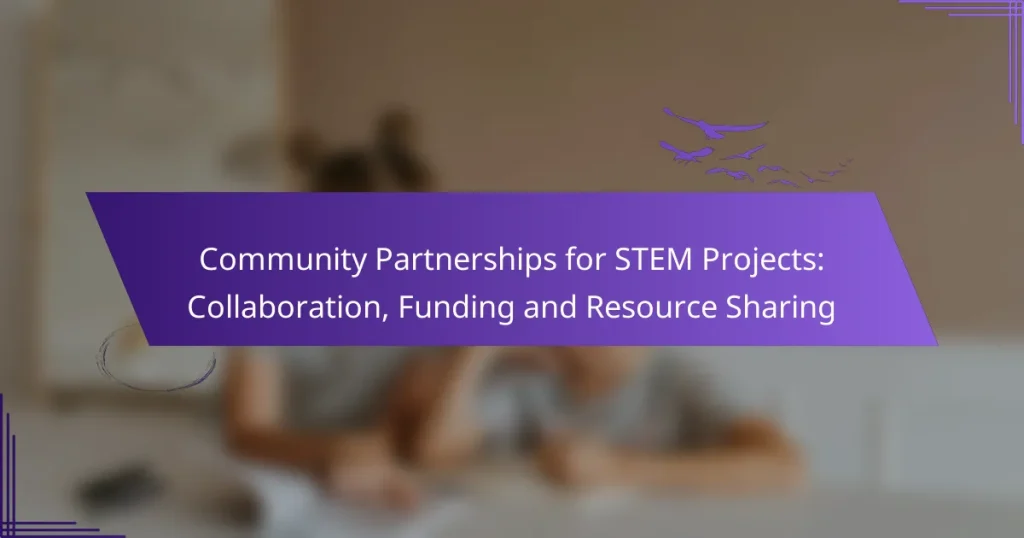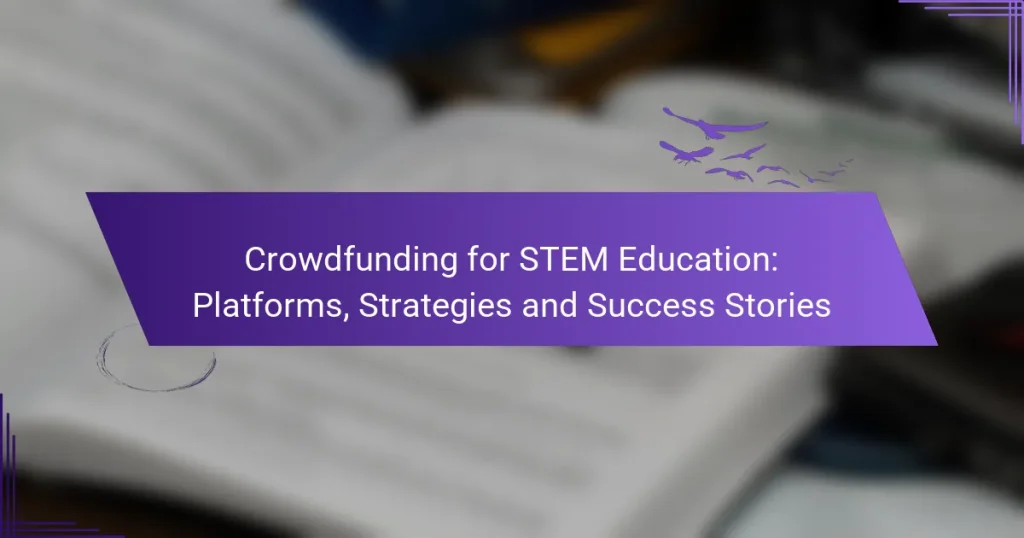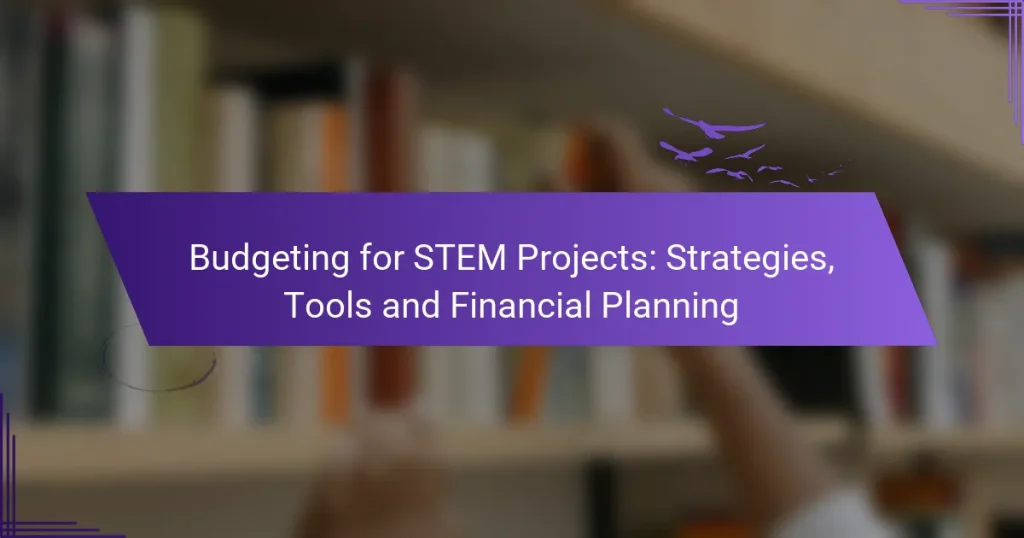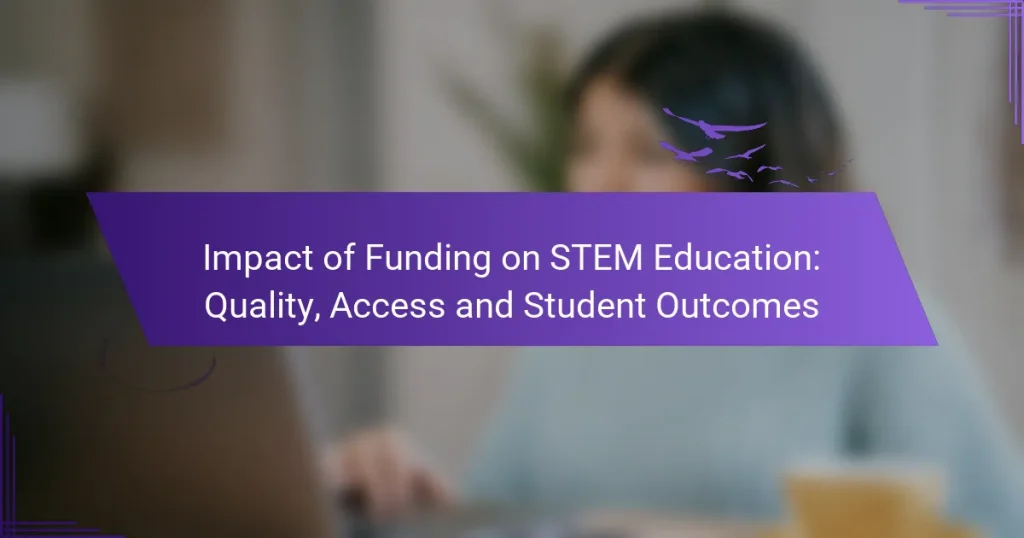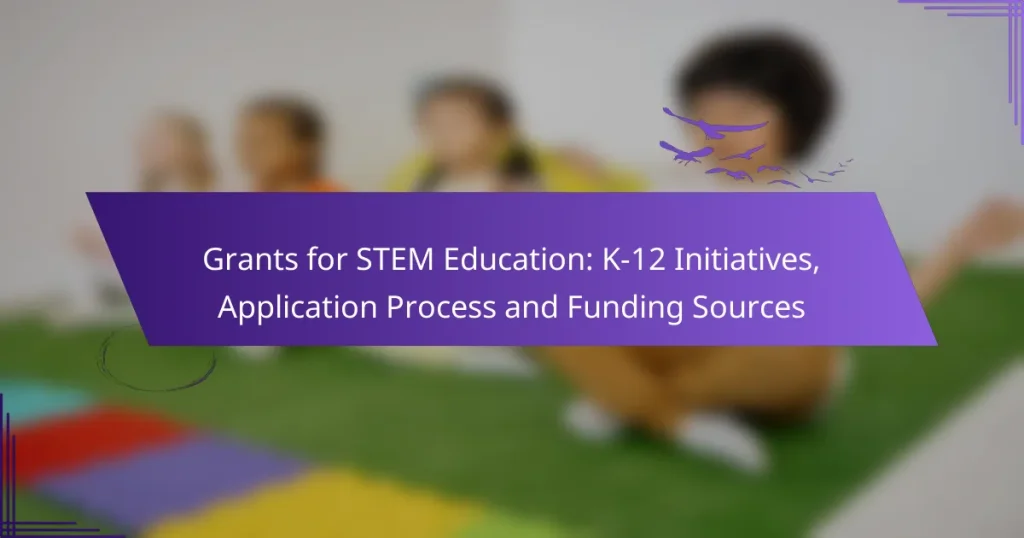Funding and resources for STEM projects are crucial for fostering innovation and education in science, technology, engineering, and mathematics. In the US, various options such as government grants, private foundations, and corporate sponsorships are available, each with specific application processes and eligibility criteria. By identifying the right funding sources and preparing compelling proposals, project leaders can secure the necessary support to enhance their initiatives.
Corporate Sponsorship for STEM Programs: Opportunities, Benefits and Engagement
Crowdfunding for STEM Education: Platforms, Strategies and Success Stories
Budgeting for STEM Projects: Strategies, Tools and Financial Planning
Impact of Funding on STEM Education: Quality, Access and Student Outcomes
Grants for STEM Education: K-12 Initiatives, Application Process and Funding Sources
What funding options are available for STEM projects in the US?
In the US, various funding options exist for STEM projects, including government grants, private foundations, crowdfunding, and corporate sponsorships. Each option has its own application process, eligibility criteria, and funding amounts, making it essential to choose the right fit for your project’s needs.
National Science Foundation Grants
The National Science Foundation (NSF) offers a range of grants specifically for STEM projects, aimed at advancing research and education in science and technology. These grants can support everything from basic research to educational initiatives and can range from a few thousand to several million dollars.
To apply, projects must align with NSF’s mission and demonstrate potential for significant impact. It’s crucial to carefully read the grant guidelines and prepare a strong proposal that outlines objectives, methodologies, and expected outcomes.
Department of Education Funding
The Department of Education provides funding opportunities for STEM education projects through various programs, such as the Supporting Effective Instruction State Grants and the 21st Century Community Learning Centers. These funds are typically aimed at improving educational outcomes and expanding access to quality STEM education.
Applicants should focus on how their projects will enhance learning experiences and meet specific educational standards. Collaboration with local schools or educational organizations can strengthen proposals and increase chances of receiving funding.
Private Foundation Grants
Numerous private foundations offer grants for STEM initiatives, often focusing on specific areas such as environmental science, technology innovation, or educational outreach. Examples include the Gates Foundation and the Packard Foundation, which provide substantial funding for impactful projects.
When applying for these grants, it’s important to research each foundation’s mission and funding priorities. Tailoring your proposal to align with their goals can significantly improve your chances of success.
Crowdfunding Platforms
Crowdfunding has become a popular method for financing STEM projects, allowing individuals and organizations to raise small amounts of money from a large number of people. Platforms like Kickstarter and GoFundMe provide a space to showcase projects and attract backers.
Successful crowdfunding campaigns often include engaging presentations, clear funding goals, and attractive rewards for backers. It’s essential to promote your campaign through social media and other channels to reach a wider audience.
Corporate Sponsorships
Corporate sponsorships can provide significant funding for STEM projects, especially those that align with a company’s interests or social responsibility goals. Many companies are eager to support educational initiatives that enhance their brand image and contribute to community development.
When seeking corporate sponsorship, identify companies that have a vested interest in your project’s focus area. Prepare a compelling proposal that outlines the benefits to the company, such as visibility, community goodwill, and potential for collaboration.
How can I apply for STEM project funding?
To apply for STEM project funding, you need to identify suitable funding sources, prepare a compelling proposal, and submit your application according to their guidelines. This process often involves detailed planning and adherence to specific requirements set by funding organizations.
Application Process for NSF Grants
The National Science Foundation (NSF) grants require a thorough application process that typically includes submitting a proposal through their online system. Applicants must outline their project goals, methodologies, and anticipated impacts while adhering to NSF’s formatting and content guidelines.
Key components of the proposal include a project summary, a detailed budget, and a biographical sketch of the principal investigators. It’s essential to review the NSF’s Grant Proposal Guide for specific requirements and deadlines.
Steps to Secure Private Funding
Securing private funding for STEM projects often involves networking and building relationships with potential donors or sponsors. Start by identifying organizations or individuals who align with your project’s mission and values.
Prepare a concise pitch that highlights the project’s significance and potential impact. Follow up with a well-structured proposal that includes a budget and a clear plan for how the funds will be used. Consider leveraging connections through industry events or online platforms to enhance your outreach.
Crowdfunding Campaign Setup
Setting up a crowdfunding campaign for STEM projects involves selecting a suitable platform, such as Kickstarter or Indiegogo, and creating an engaging campaign page. Clearly articulate your project’s goals, target audience, and funding needs to attract backers.
Include visuals, such as videos or infographics, to enhance your campaign’s appeal. Promote your campaign through social media and email to reach a broader audience. Regular updates and communication with backers can help maintain interest and encourage contributions.
What resources support STEM education initiatives?
Various resources are available to support STEM education initiatives, including online courses, educational toolkits, and community partnerships. These resources provide essential materials and frameworks to enhance learning experiences in science, technology, engineering, and mathematics.
Online Course Platforms
Online course platforms offer a wide range of STEM courses that can be accessed by students and educators alike. Popular platforms like Coursera, edX, and Khan Academy provide courses from reputable institutions, often at little to no cost.
When selecting a platform, consider the course content, instructor qualifications, and user reviews. Many platforms also offer certificates upon completion, which can be beneficial for career advancement.
STEM Education Toolkits
STEM education toolkits are curated resources that include lesson plans, activities, and materials designed to facilitate hands-on learning. Organizations like the National Science Teachers Association (NSTA) and the Smithsonian Science Education Center provide comprehensive toolkits tailored for different educational levels.
These toolkits often align with national education standards, making it easier for educators to integrate them into their curricula. Look for toolkits that include assessment tools and adaptable resources to meet diverse classroom needs.
Community Partnerships
Community partnerships can significantly enhance STEM education by connecting schools with local organizations, businesses, and universities. Collaborating with these entities can provide access to additional resources, expertise, and real-world applications of STEM concepts.
To establish effective partnerships, identify local organizations that share a commitment to STEM education and propose mutually beneficial projects. Regular communication and clear objectives will help sustain these partnerships over time.
What are the eligibility criteria for STEM funding?
Eligibility criteria for STEM funding typically include nonprofit status, project scope, and potential impact. Organizations must demonstrate their commitment to advancing STEM education or research through specific projects that align with funding agency goals.
Nonprofit Status Requirements
Most STEM funding sources require applicants to have nonprofit status, which means they must be registered as a 501(c)(3) organization in the United States or meet similar criteria in other countries. This status ensures that the organization operates for charitable, educational, or scientific purposes rather than for profit.
To confirm eligibility, organizations should provide documentation of their nonprofit status, including tax-exempt letters and proof of registration. Some grants may also require a history of successful project implementation to demonstrate reliability and capability.
Project Scope and Impact
The project scope must clearly define the objectives, target audience, and expected outcomes. Funding agencies look for projects that address significant challenges in STEM fields and have the potential for broad impact, such as improving educational access or fostering innovation.
When applying, organizations should outline specific metrics for success and how they plan to evaluate the project’s effectiveness. Including a detailed budget that aligns with the project goals is also crucial, as it helps funders understand how resources will be allocated.
How can I evaluate STEM funding opportunities?
To evaluate STEM funding opportunities, start by identifying the specific goals of your project and the criteria set by potential funders. Consider factors such as eligibility, funding amounts, deadlines, and the application process to determine which opportunities align best with your needs.
Grant Comparison Matrix
A Grant Comparison Matrix is a useful tool for evaluating multiple funding opportunities side by side. Create a table that includes key criteria such as funding amount, application deadline, eligibility requirements, and evaluation criteria. This visual representation helps you quickly identify which grants are most suitable for your project.
For example, you might compare local government grants against private foundation grants. Local grants may offer smaller amounts but have less competition, while private foundations might provide larger sums but require more extensive applications.
Funding Source Reputation
The reputation of a funding source can significantly impact your project’s success and credibility. Research the funder’s history, their previous grant recipients, and the outcomes of funded projects. This information can give you insights into the funder’s priorities and the likelihood of receiving support.
Consider reaching out to past recipients to gather firsthand experiences. Look for feedback on the application process, communication with the funder, and any post-award support provided. A reputable funding source often has a track record of successful projects and positive relationships with grantees.
